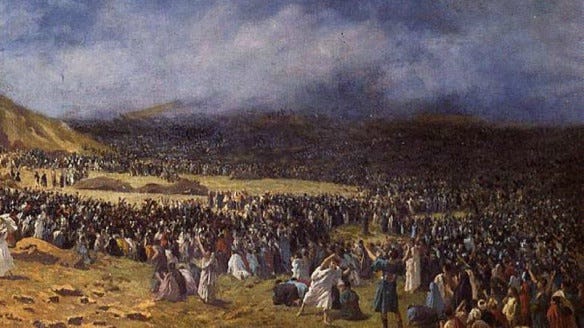A reference to “The Seven Books of the Torah” might raise some eyebrows, but Rabi Yehudah HaNasi gives the two pesukim in our parsha (10, 35-46) that describe the movement of the aron, and the Jews, to a new location, the status of an “important book unto itself” (Shabbos, 116a). And so what we think of as Sefer Bamidbar is, in that opinion, three books of the Torah.
And, following that idea, the mishneh in Yadayim, 3:5, noting the number of letters in those two pesukim, teaches that a faded Torah scroll that preserves 85 consecutive letters retains its holiness.
Rav Hirsch points out the strange fact that the two psukim of that “important book” seem to say that it was after Hashem gave the signal for the aron to move and the movement had actually begun that Moshe “ordered” its movement.
Rav Hirsch explains that what is taught us here is that Moshe so fully absorbed Hashem’s command that it became part of his own resolution – exemplifying the concept of “make His will your will” (Avos 2:4). Hashem’s will became Moshe’s.
Interesting is the fact that “85” in Hebrew spells peh, “mouth.” Perhaps that is the key to understanding the Torah’s description, later in our very parsha, of Hashem and Moshe speaking peh el peh, “mouth to mouth” (Bamidbar 12:8).
“Mouth to ear” would seem a more apt metaphor. Why “mouth to mouth”?
In consonance with Rav Hirsch’s observation, though, the phrase becomes poignant. What came from, so to speak, Hashem’s mouth – His will – came immediately, as a result, from Moshe’s ow mouth. It came to constitute his will, as he totally absorbed the Divine will as his own.
© 2023 Rabbi Avi Shafran
